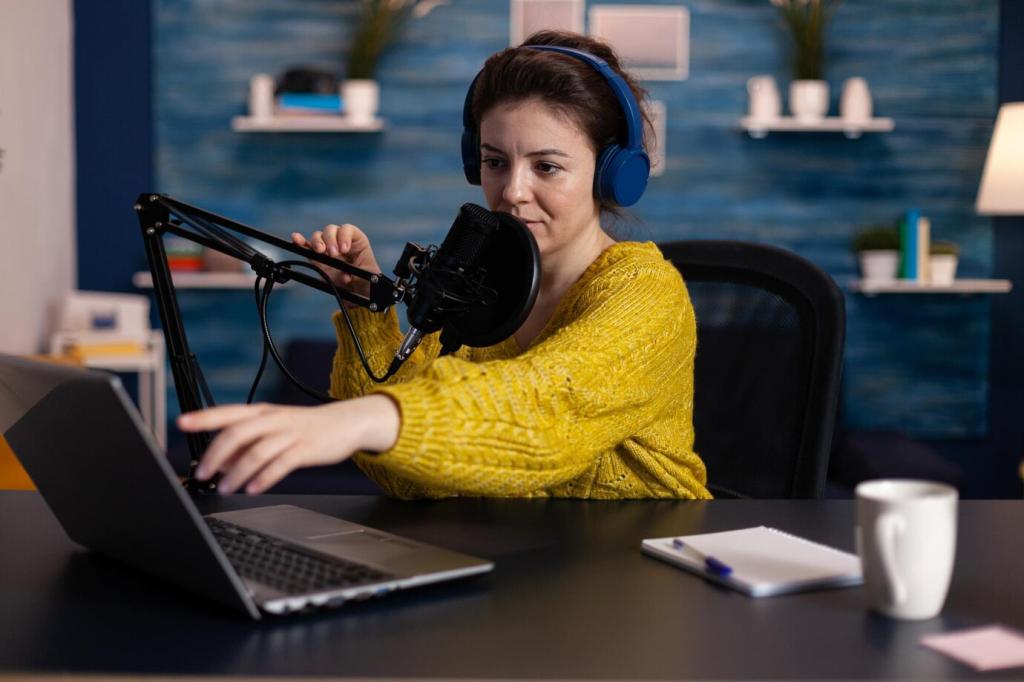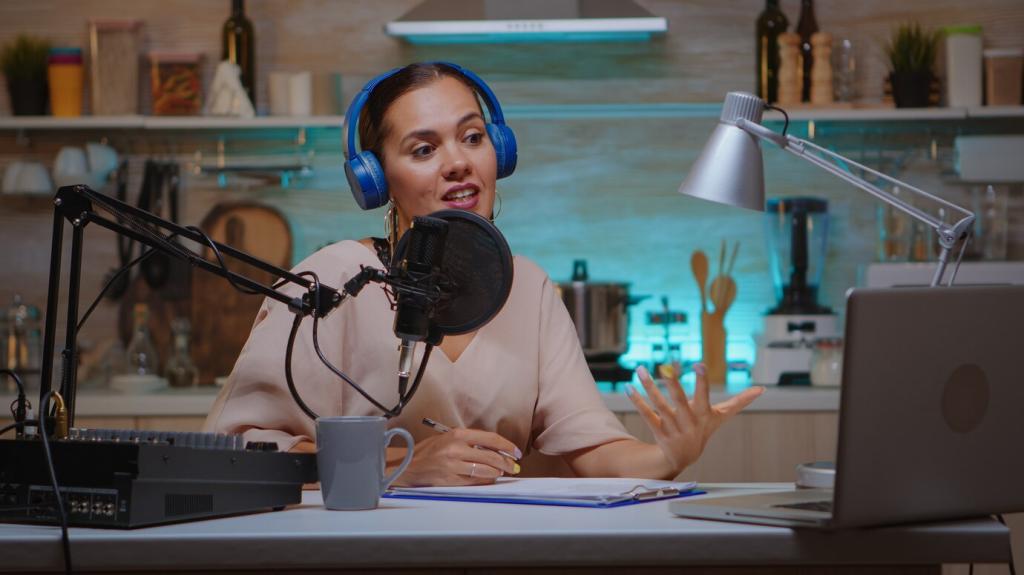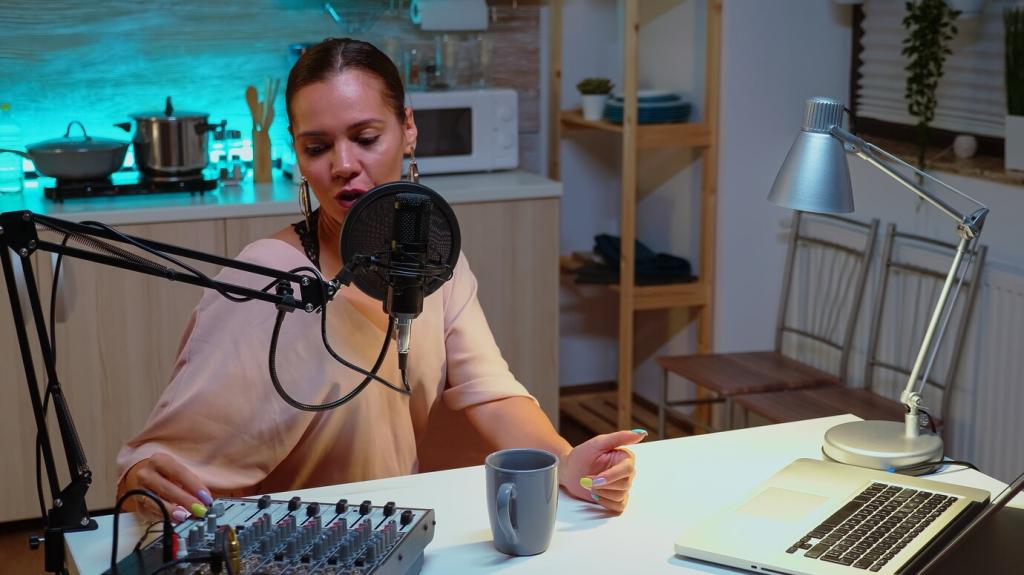Structuring Non-Fiction Stories in Podcast Format
Today’s chosen theme: Structuring Non-Fiction Stories in Podcast Format. Build episodes that hook curiosity, guide attention, and reward listeners with meaning. We’ll explore frameworks, craft, and workflows that turn real-life reporting into vivid narrative arcs. Share your own structure wins below and subscribe for weekly prompts.
Attention Is a Finite Resource
Listeners decide quickly whether to stay. A crisp promise, purposeful beats, and signposted turns reduce cognitive friction. When producer Maya re-cut her flood story with a stated question, retention jumped; the audience finally knew what each scene was building toward.
Structure Builds Trust
In non-fiction, clarity is an ethical act. Transparent framing, timestamps, and narrative checkpoints tell listeners you’re guiding them carefully. Host introductions that preview the road ahead make it easier to follow tough material without feeling lost or manipulated.
Emotion Needs Architecture
Even true events need arrangement to land. Sequencing reveals, withholding strategically, and returning to leitmotifs amplifies meaning. When an elder’s testimony anchored the midpoint, our audience messaged to say the moment felt earned, not sensational, because the build-up honored context.


Choosing a Framework: Three-Act, Five-Beat, or Mosaic
Act I sets the central question and characters. Act II complicates with obstacles and shifting stakes. Act III resolves, reframes, or leaves a purposeful open thread. This classic structure helps first-time listeners feel oriented without sacrificing depth.
Choosing a Framework: Three-Act, Five-Beat, or Mosaic
Opening hook, context, escalation, turn, resolution. The extra beats help you distribute tape more evenly. Investigative shows love this because it paces revelations and gives room for synthesis, while still landing the emotional and factual payoff cleanly.



Openings, Endings, and the Art of the Payoff
Start with the strongest moment that encapsulates stakes, not just noise. A tense voicemail, a laugh that begs explanation, a contradiction. Then state the guiding question within sixty seconds so listeners understand why the next scenes matter.
Openings, Endings, and the Art of the Payoff
Return to an image, line, or sonic motif introduced early. When the baker who feared eviction reopened with community help, we replayed her dough-slapping rhythm under the final graf. The echo delivered emotional closure without overstating the moral.


Music as Structural Glue
Use musical cues to mark act breaks, signal shifts in perspective, or prepare for a reveal. Keep themes consistent but vary instrumentation. Avoid wallpaper scoring; let music earn its place by clarifying emotion and announcing narrative turns.
Silence as Emphasis
A well-placed pause gives listeners time to process. After a difficult admission, one second of breath can do more than a paragraph of narration. Label silences in your script so editors and mixers protect them during the final pass.
Ethics and Clarity: Structuring with Care
Non-linear structure can illuminate truth, but label time jumps explicitly. Phrases like “Two months earlier” or “While this was unfolding” orient listeners. When we re-ordered a protest timeline, clear time markers prevented misunderstandings and preserved audience trust.
Ethics and Clarity: Structuring with Care
If a participant retracts a detail, restructure rather than bury the change. Build an on-tape explanation that respects autonomy and shows process. Transparency about edits can become a compelling beat that deepens credibility and listener engagement.
Ethics and Clarity: Structuring with Care
Let subjects lead where possible, and use expert tape to clarify, not dominate. Weave lived experience with context so neither feels tokenized. Structure your act turns around real decisions made by real people, not only the narrator’s analysis.
Workflow: From Outline to Final Cut
Outline with Color-Coded Beats
Map beats by function—blue for question, red for reveal, green for character, yellow for context. Seeing distribution exposes sagging middles. This visual approach saved our team hours by showing exactly where the tension dipped before a crucial turn.
Table Reads and Listener Reps
Do a table read with one person who hasn’t heard the reporting. Ask them to mark confusion and delight in real time. Their questions often predict audience friction points and guide surgical structural fixes before you enter the edit bay.
Lock Structure, Then Polish
Commit to structure before line edits and mix. It prevents polishing scenes that will get cut. Once locked, refine narration, compress tape, and finalize transitions. Share your before-and-after lessons to help the community learn from your process.
Join our mailing list
